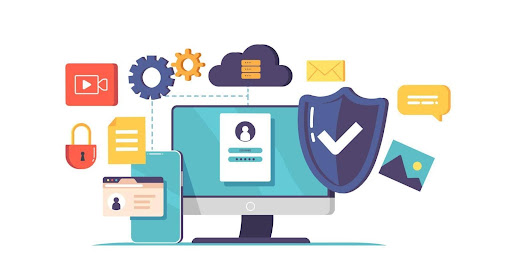If you’re a serious traveler or business professional, staying connected to the Internet is crucial. Gone are the days of hopping from one free public Wi-Fi network to another.
Now you can save on crazy roaming charges and have high-speed Internet wherever your travels take you. These devices from Sapphire (formerly Tep Wireless) and Travelwifi are easy to use and offer a satisfaction guarantee.
Mobile Hotspots
You can use a mobile hotspot to stay connected while traveling abroad. These portable devices connect to local data networks using a SIM card and provide a private Wi-Fi connection for your phones, tablets, or laptops. They are available from cellular providers and range in price depending on how much data you want, where you’re going, and how long your trip is. You can rent a mobile hotspot or buy one and load it with international data before your trip.
Many travelers don’t even know that their smartphones have a personal hotspot feature that lets them create a Wi-Fi connection for up to 10 other devices. While it’s a great way to stay connected, it will use up your phone’s data plan, so you’ll need to monitor your usage carefully.
Mobile hotspots are a better option than mobile data plans because they’re designed specifically for travel and typically have higher speed, more coverage options, and support multiple devices. Plus, they’re often more affordable than traditional cellular plans. They’re also lightweight, making them easy to pack in your bag or backpack.
When choosing a mobile hotspot, consider the following features:
Portability – Make sure the device you choose is small enough to fit in your bag or pocket and weighs less than a book. It should also be durable enough to withstand the bumps and drops of daily life on the road.
Battery Life – Look for a portable Wi-Fi device with a longer battery life so you don’t run out of juice during your trip. Also, choose a device that supports fast charging technologies, such as Quick Charge.
Network Security – Choose a portable Wi-Fi device with strong security protocols. This will help prevent cybercriminals from hijacking your connection and accessing your private information.
If you plan to use your portable Wi-Fi device for work or stream movies and TV shows, consider getting a model that supports VPN services. This will further protect your connections and mask your location, making it harder for hackers to trace your activity. Customer Support – You’ll likely have some questions or concerns when you’re on the go, so find a device with helpful customer support. Many mobile hotspots offer 24/7 support via chat or over the phone, which can be a huge relief when you’re away from home.
E-Sims
When you travel abroad, staying connected is important. Whether you’re looking for restaurant recommendations, booking a taxi or ride-share, or checking out the local culture, being able to get online is key. While there are many ways to stay connected while traveling, one of the most popular is to use a local SIM card or a travel eSIM.
An eSIM (embedded SIM) is a newer SIM card built right into your device. It replaces the traditional SIM tray and allows you to switch carriers or plans without having to swap out the physical SIM card. For travelers, this can mean saving money on data roaming fees while traveling abroad.
To use an eSIM, first make sure your device supports it. Typically, you’ll be able to tell by looking in the phone’s settings or asking your mobile carrier. You’ll also need to check if your device is carrier-locked, which means it can only be used with your current network provider.
Once you have a device that supports an eSIM, you can purchase and activate one for your trip using a website or app. It’s important to only purchase an eSIM from a trusted source, such as Airalo, as eSIMs that are not purchased and activated in advance can often lead to high data roaming charges or a device shutdown.
With an eSIM, you can avoid the expensive data roaming fees and get internet access in more than 170 countries. You’ll also be able to choose the amount of data you need for your trip and only pay for what you need. Plus, there’s no need to swap out your SIM card in a foreign country or worry about losing the tiny card – with an eSIM, everything is stored digitally and can be easily accessed on your device.
So the next time you’re planning a trip, don’t forget to look into eSIMs! With their low rates, convenience, and speed, they’re a great way to keep you connected on the go. If you’re ready to try eSIM travel data for yourself, click the link below and get $3 off your first plan!
Public Wi-Fi
When traveling or working abroad most people rely on public Wi-Fi to stay connected online. This can be a convenient and inexpensive option, but it’s also risky as your information is vulnerable to hackers.
The problem is that your devices will connect automatically (and transmit data) to any network in range, even if it’s not one you’ve saved as a favorite. You can help prevent this by keeping your phone and other devices’ security settings up to date and making sure websites scramble your data using HTTPS. You can also use browser add-ons like Force-TLS and HTTPS Everywhere to make sure that your web browsing is as secure as possible.
Another way to stay connected is to rely on your phone’s personal hotspot feature. This is easy to set up and can be used in a variety of locations. However, it does come with some limitations, such as consuming your phone’s data and only being able to access websites that are secure.
In addition, it may not be as fast as a regular data connection and is only suitable for light web browsing and streaming video. Another disadvantage is that many hotels, RV parks, coffee shops, and other on-the-go locations don’t allow different devices to talk to each other over the same Wi-Fi connection for security reasons. This can limit your ability to listen to music through a Sonos system or control your TV or other smart home devices with your phone.
A travel router can solve this issue by creating its own private Wi-Fi network that your devices will automatically connect to. They can be purchased outright and used at multiple locations or rented on a pay-as-you-go basis. Companies such as mywebspot offer a device called the Travelwifi which you can purchase or rent for around $11 per day for 4G data in a number of destinations worldwide. You can find a full list of their available destinations on their website. This is a much better alternative to public Wi-Fi and a great solution for travelers who want the convenience of staying online without the risks.
Roaming
When traveling internationally, data roaming allows your phone to connect to foreign networks beyond your mobile carrier’s coverage area. It is an essential feature for some travelers, especially those who need to work while away from home or keep in touch with family and friends back home. Unfortunately, the costs of data roaming can quickly add up if you are not careful. With this in mind, here are some tips to help you avoid unwanted charges while using your phone abroad.
Whenever you turn on mobile data roaming, your phone will connect to a new wireless network and use data services like sending texts and calling. This is because your wireless carrier has an agreement with a foreign network to allow you to access their data services while you are out of their coverage area (or even out of the country).
Some countries have cheaper rates for roaming than others, so it is important to check your plan’s international roaming rates before you travel. You can also reduce your data usage by using free Wi-Fi when possible. For example, many hotels and airports offer Wi-Fi, as do many cafes, restaurants, and public transit hubs. Wi-Fi calling and messaging apps like WhatsApp are also less expensive alternatives to traditional SMS messages and can help you stay connected without incurring roaming charges.
You can also save money using the cheapest local SIM card available or purchasing a mobile hotspot for one-off short trips. Many companies like TravelersWifi offer portable Wi-Fi devices for rent, starting at around $90 per week and including a generous amount of local and worldwide data. You can also purchase an international calling card that can be used for calls, SMS, and video calling, or buy a local SIM card at the airport or your hotel upon arrival.
Ultimately, the best way to stay connected on your trip is by turning off data roaming altogether and relying on a trusted alternative. While this is not the most convenient option, it will save you the most money. You should also always monitor your data usage regularly to ensure you don’t exceed your mobile plan’s limits and incur extra charges.





